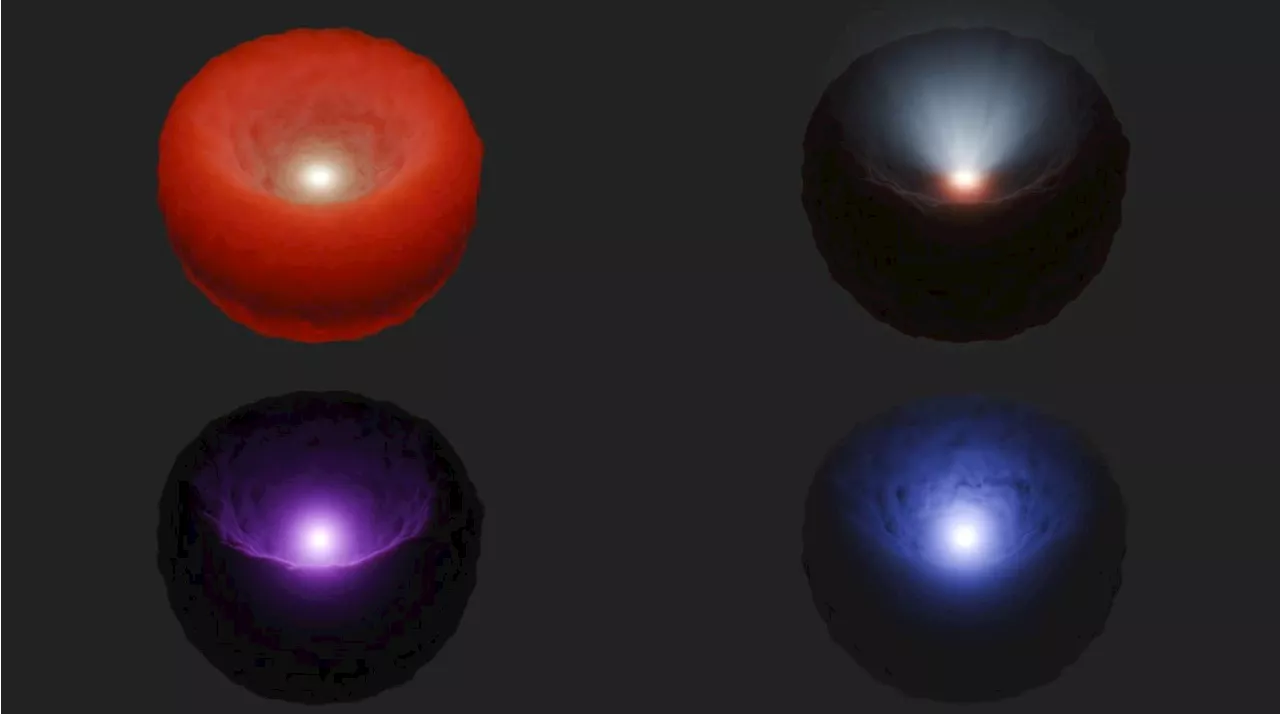Supermassive black holes, trillions of times the mass of our Sun, are often hidden from view by thick clouds of gas and dust. Astronomers are using infrared light to find these hidden giants, looking for glowing donuts of gas and dust called tori that surround them. A new survey using data from multiple NASA telescopes is helping to advance our understanding of these elusive objects.
A supermassive black hole surrounded by a torus of gas and dust is depicted in four different wavelengths of light in this artist’s concept. Visible light and low-energy X-rays are blocked by the torus; infrared is scattered and reemitted; and some high energy X-rays can penetrate the torus. Image Credit: NASA/JPL-Caltech
SMBHs, like all black holes, emit no light themselves. Instead, the light comes from the torus of swirling gas and dust that forms an accretion ring around the SMBH. The gas and dust become superheated and emit electromagnetic radiation. So far, scientists have only imaged two SMBHs, both with the. Whether or not we can see the centre of a galaxy like this depends on our viewing. From a “side” view, the torus blocks it out, while from a “top” or “bottom” view, it doesn’t.
” It’s published in The Astrophysical Journal, and the lead author is Peter G. Boorman, an astrophysicist from the Cahill Center for Astrophysics at the California Institute of Technology. However, IRAS didn’t discriminate against infrared sources. It also spotted galaxies undergoing rapid star formation, which emit similar infrared light as AGN. In this new research, the authors used ground-based telescopes to differentiate between the two.
SUPERSIZE BLACK HOLES ASTRONOMY INFRARED LIGHT AGN TORUS DUST
United States Latest News, United States Headlines
Similar News:You can also read news stories similar to this one that we have collected from other news sources.
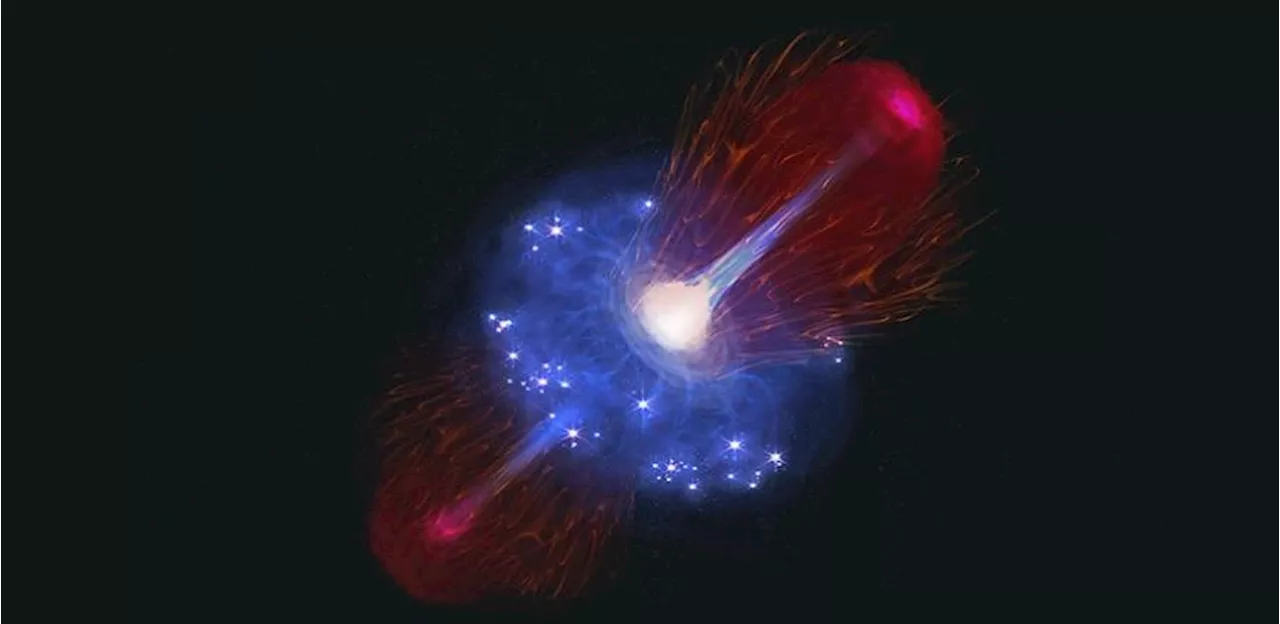 Dormant Supermassive Black Hole Puzzles AstronomersAstronomers using the James Webb Space Telescope have discovered a supermassive black hole (SMBH) that is surprisingly dormant despite its immense size. This black hole, GN-1001830, is growing at an extremely slow rate compared to its mass, posing a puzzle for researchers trying to understand the growth of these colossal objects in the early Universe.
Dormant Supermassive Black Hole Puzzles AstronomersAstronomers using the James Webb Space Telescope have discovered a supermassive black hole (SMBH) that is surprisingly dormant despite its immense size. This black hole, GN-1001830, is growing at an extremely slow rate compared to its mass, posing a puzzle for researchers trying to understand the growth of these colossal objects in the early Universe.
Read more »
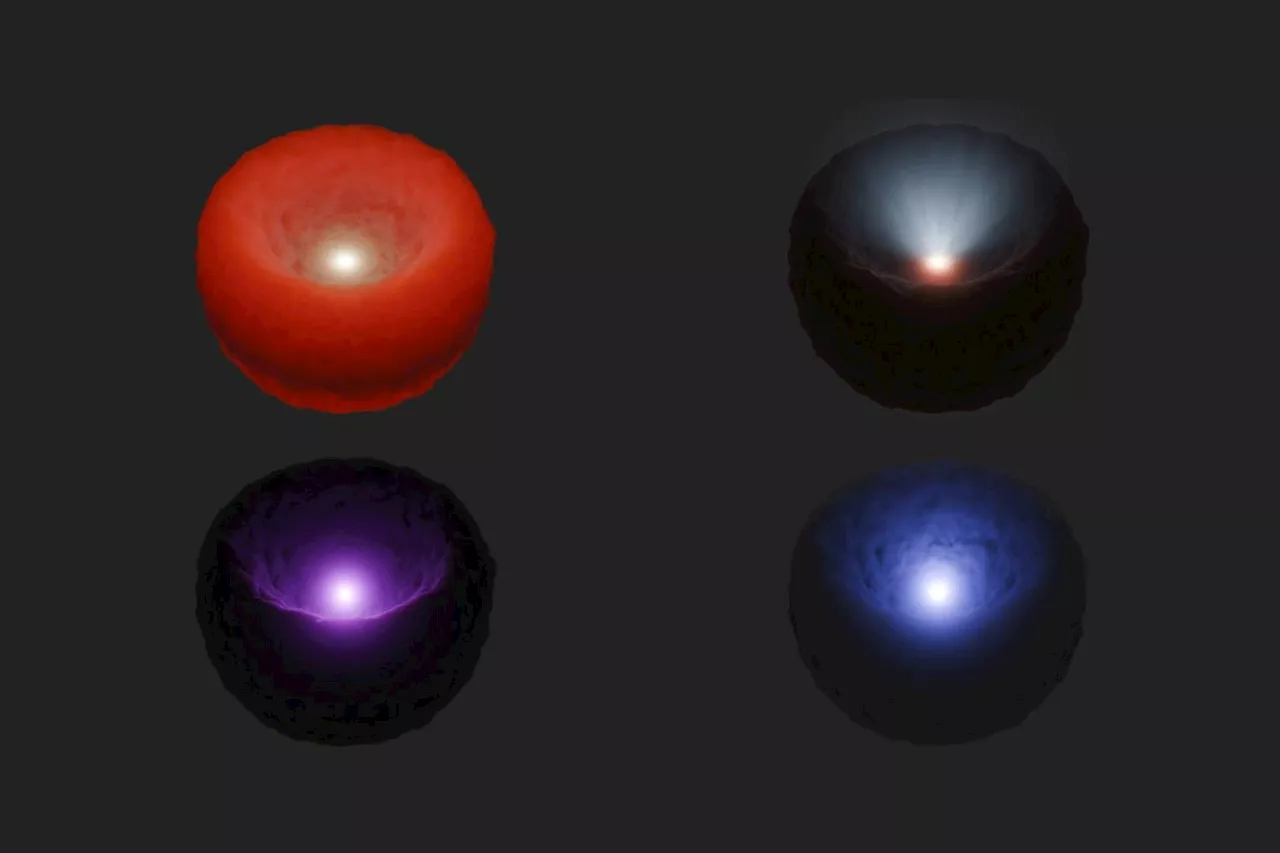 Hidden Supermassive Black Holes May Outnumber Visible OnesA new study suggests that more supermassive black holes exist in the universe than we can currently observe. This is because about 35% of these black holes are obscured by gas and dust, a finding that challenges previous estimates. The research, based on data from NASA's IRAS and NuSTAR observatories, highlights the significant role these hidden giants play in galactic evolution.
Hidden Supermassive Black Holes May Outnumber Visible OnesA new study suggests that more supermassive black holes exist in the universe than we can currently observe. This is because about 35% of these black holes are obscured by gas and dust, a finding that challenges previous estimates. The research, based on data from NASA's IRAS and NuSTAR observatories, highlights the significant role these hidden giants play in galactic evolution.
Read more »
 Binary Star System Found Near Supermassive Black HoleAstronomers have discovered a binary star system, D9, orbiting the supermassive black hole Sagittarius A* at the center of our Milky Way galaxy. This unexpected finding challenges previous assumptions about the gravitational forces in this region and opens new possibilities for studying planet formation near black holes.
Binary Star System Found Near Supermassive Black HoleAstronomers have discovered a binary star system, D9, orbiting the supermassive black hole Sagittarius A* at the center of our Milky Way galaxy. This unexpected finding challenges previous assumptions about the gravitational forces in this region and opens new possibilities for studying planet formation near black holes.
Read more »
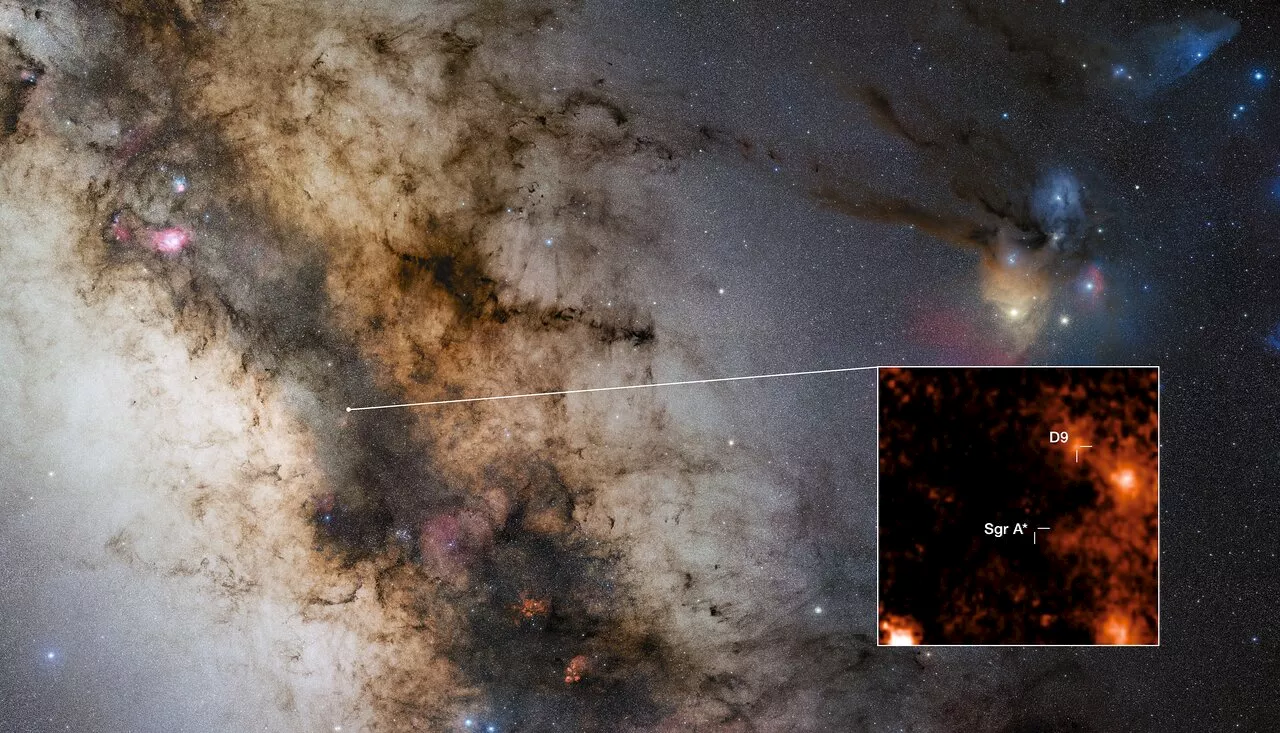 Binary Star Found Orbiting Supermassive Black HoleA new study reveals the discovery of a binary star system, D9, orbiting the supermassive black hole Sagittarius A* at the center of our galaxy.
Binary Star Found Orbiting Supermassive Black HoleA new study reveals the discovery of a binary star system, D9, orbiting the supermassive black hole Sagittarius A* at the center of our galaxy.
Read more »
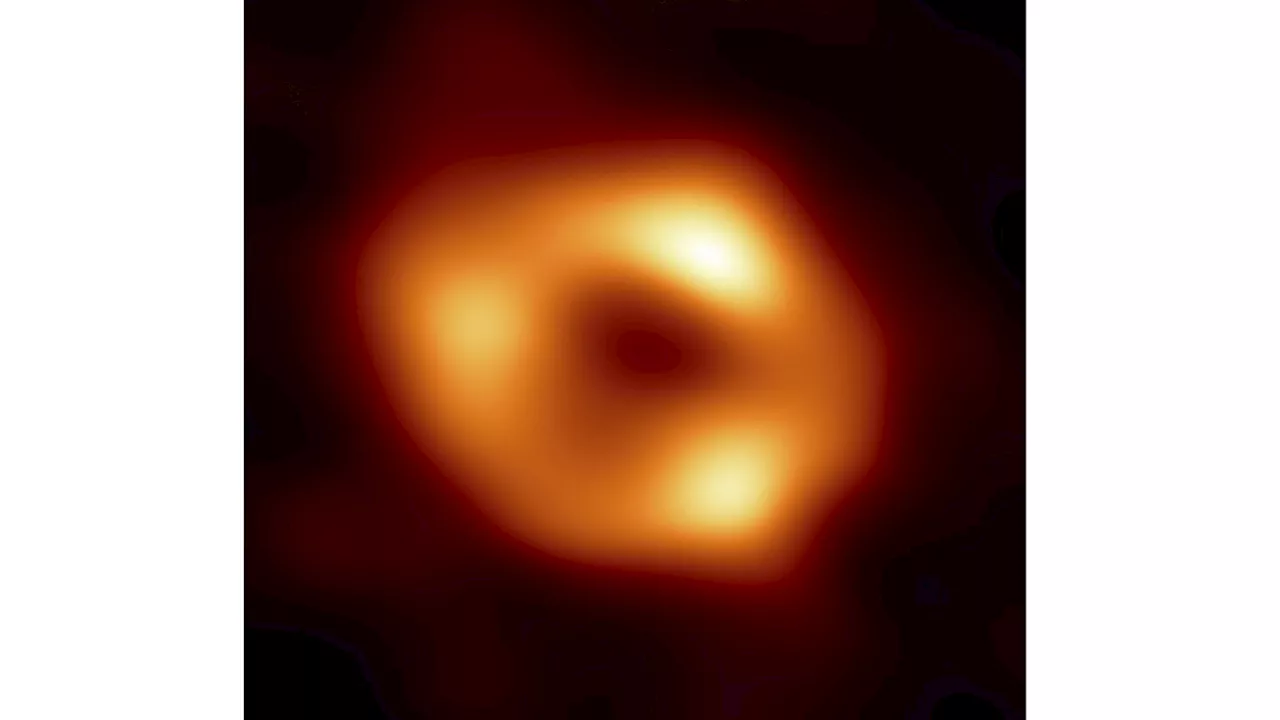 Two Stars Orbiting Milky Way's Supermassive Black HoleAstronomers have made a remarkable discovery near the center of our galaxy: two stars locked in a gravitational dance around the Milky Way's supermassive black hole.
Two Stars Orbiting Milky Way's Supermassive Black HoleAstronomers have made a remarkable discovery near the center of our galaxy: two stars locked in a gravitational dance around the Milky Way's supermassive black hole.
Read more »
 Binary Star Found Orbiting Sagittarius A* - First Ever Discovery Near a Supermassive Black HoleAn international team of researchers has made a groundbreaking discovery by finding the first binary star orbiting close to Sagittarius A*, the supermassive black hole at the center of our galaxy. This finding sheds light on stellar survival in extreme gravitational environments and opens possibilities for detecting planets near Sagittarius A*.
Binary Star Found Orbiting Sagittarius A* - First Ever Discovery Near a Supermassive Black HoleAn international team of researchers has made a groundbreaking discovery by finding the first binary star orbiting close to Sagittarius A*, the supermassive black hole at the center of our galaxy. This finding sheds light on stellar survival in extreme gravitational environments and opens possibilities for detecting planets near Sagittarius A*.
Read more »
